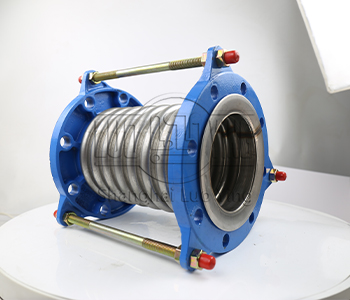Classification of 304 stainless steel bellows compensator.
Jul-23-15
Classification of 304 stainless steel bellows compensator.304 stainless steel bellows compensator is a type of expansion joint widely used in various industries for its excellent corrosion resistance, heat resistance, and durability. It is commonly used in pipelines to absorb thermal expansion, reduce vibration, and compensate for misalignment and movement.

1 . Single bellow vs. multiple bellows:
The compensators can be classified based on the number of bellows they have. Single bellow compensators consist of a single bellows element, whereas multiple bellows compensators have two or more bellows elements. The choice depends on factors such as the required expansion and the space available for installation.
2 . Axial movement vs. lateral movement:
Compensators can be designed to allow axial movement, lateral movement, or both. Axial movement compensators can absorb expansion and contraction in straight pipelines, while lateral movement compensators can accommodate lateral movement in pipelines that are not perfectly aligned.
3 . Hinged vs. non-hinged:
Hinged bellows compensators have a hinged or articulated design that allows angular movement in addition to axial and lateral movement. They are used in applications where angular movement is expected due to factors such as thermal expansion or pipe misalignment.
4 . Pressure rating and size:
Compensators are also classified based on their pressure rating, which determines the maximum pressure the compensator can withstand. Similarly, they can be classified based on size, as smaller compensators are suitable for low-pressure applications, while larger compensators can handle higher pressures.
5 . Flanged vs. welded:
Compensators are available in both flanged and welded configurations. Flanged compensators have flanges at both ends, which allows for easy installation and removal. Welded compensators, on the other hand, are directly welded into the pipeline, providing a more compact and integrated solution.
6 . Bellows material:
While the outer body of the compensator is typically made of 304 stainless steel, the bellows element can be made of different materials depending on the specific requirements. Common materials include stainless steel, nickel alloys, and other exotic materials that offer superior corrosion resistance or high-temperature resistance.
In conclusion, the classification of 304 stainless steel bellows compensator can be based on factors such as the number of bellows, movement capabilities, hinged or non-hinged design, pressure rating, size, flanged or welded configuration, and bellows material. Understanding these classifications can help in selecting the right compensator for specific application requirements.

